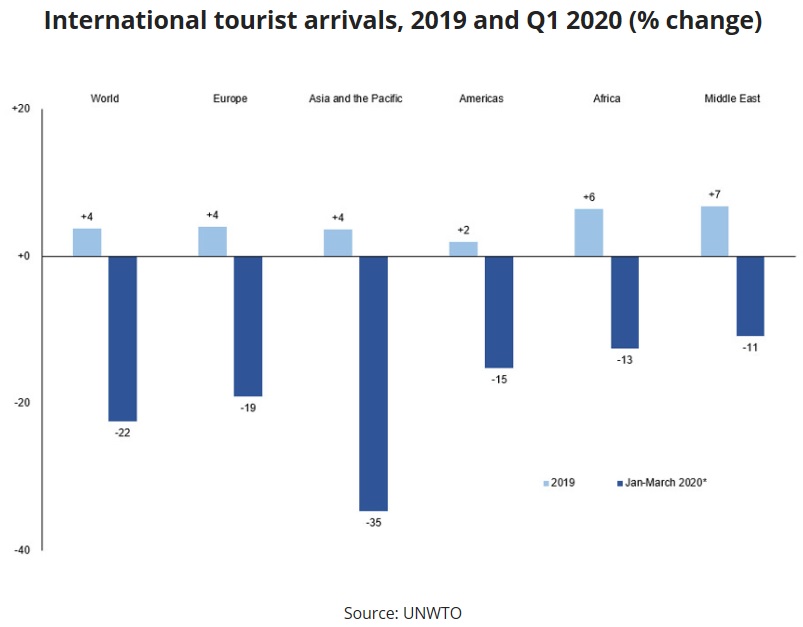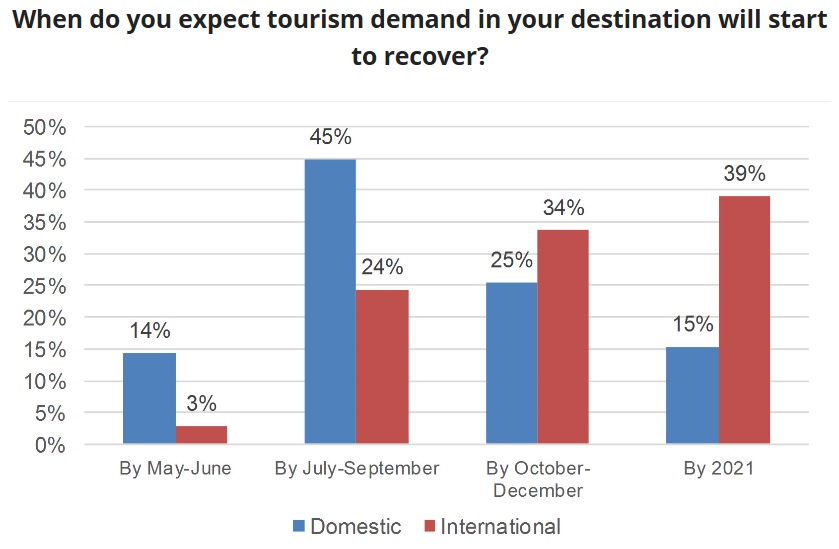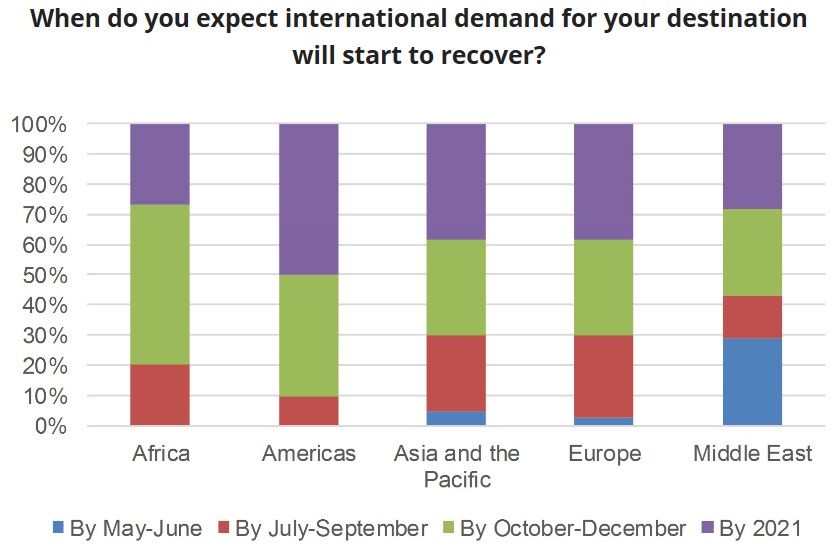|
According to the World Tourism Organization, the
COVID19 pandemic has caused a 22% fall in international tourist
arrivals in Q1 2020, and could lead to an annual decline of
between 60% and 80% when compared with 2019.
Arrivals in
March dropped sharply by 57% following the start of a lockdown in
many countries, as well as the widespread introduction of travel
restrictions and the closure of airports and national borders.
This translates into a loss of 67 million international arrivals
and about US$80 billion in receipts (exports from tourism).
Although Asia and the Pacific shows the highest
impact in relative and absolute terms (-33 million arrivals), the
impact in Europe, though lower in percentage, is still high in
volume (-22 million).

UNWTO Secretary-General, Zurab Pololikashvili, said,
�The world is facing an unprecedented health and economic crisis.
Tourism has been hit hard, with millions of jobs at risk in one of
the most labour-intensive sectors of the economy.�
Prospects for the year have been downgraded
several times since the outbreak and uncertainty continues to
dominate.
Current scenarios point to possible declines in
arrivals of 58% to 78% for the year. These depend on the speed of
containment and the duration of travel restrictions and shutdown
of borders. The following scenarios for 2020 are based on three
possible dates for the gradual opening up of international
borders.
Scenario 1: (-58%) based on the gradual opening of
international borders and easing of travel restrictions in early
July.
Scenario 2: (-70%) based on the gradual opening of
international borders and easing of travel restrictions in early September.
Scenario 3: (-78%) based on the gradual opening of
international borders and easing of travel restrictions only in
early December.
Under these scenarios, the impact of the loss of
demand in international travel could translate into:
- Loss of 850 million to 1.1 billion international
tourists;
- Loss of US$910 billion to US$1.2 trillion in export
revenues from tourism; and
100 to 120 million direct tourism jobs at
risk.
This is by far the worst crisis that international
tourism has faced since records began in 1950. The impact will be
felt to varying degrees in the different global regions and at
overlapping times, with Asia and the Pacific expected to rebound
first.
Experts See Recovery in 2021
Domestic demand is expected to recover faster than
international demand according to the UNWTO Panel of Experts
survey.
The majority expects to see signs of recovery by the final
quarter of 2020 but mostly in 2021.
Based on previous crises,
leisure travel is expected to recover quicker, particularly travel
for visiting friends and relatives, than business travel.
The estimates regarding the recovery of
international travel is more positive in Africa and the Middle
East with most experts foreseeing recovery still in 2020.
Experts
in the Americas are the least optimistic and least likely to
believe in recovery in 2020, while in Europe and Asia the outlook
is mixed, with half of the experts expecting to see recovery
within this year.


See latest
Travel News,
Video
Interviews,
Podcasts
and other
news regarding:
COVID19,
UNWTO,
Outlook,
Forecast,
Arrivals.
|
Headlines: |
|
|
